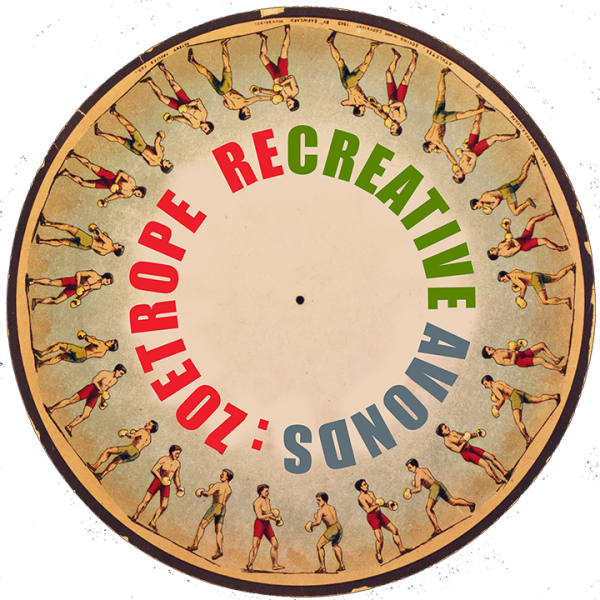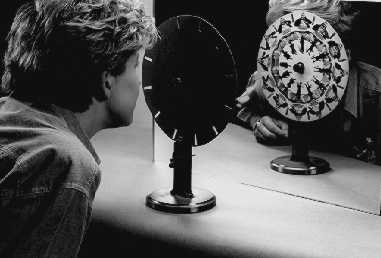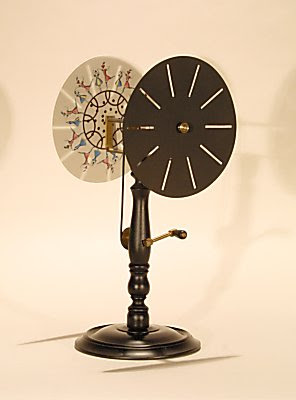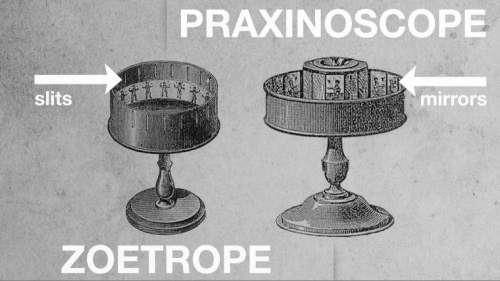Difference between revisions of "Animation: History, resources, and other good stuff"
(→Motors) |
|||
| Line 135: | Line 135: | ||
=Potentially useful re-creative technology= | =Potentially useful re-creative technology= | ||
==Motors== | ==Motors== | ||
| + | |||
| + | [https://www.youtube.com/watch?v=yHFkaeDZJWs !!! WATCH THIS / very nice video from the Prelinger Archives] | ||
===DC motors=== | ===DC motors=== | ||
<br> | <br> | ||
Revision as of 00:45, 7 January 2015
Pre-cinematic animation devices
History
Animation - as we might understand it as a technical process of synthesising motion from a series of static images - precedes the invention of the cinematograph by several decades. It has its roots in the numerous game toys / devices, popular in the early 1800s which experimented with persistence of vision effect known as the Phi phenomenon.
Thaumatrope
The Thaumatrope accredited to three different people, Dr Fitton of London, Peter Roget and London physicist John Ayrton Paris. However it is known that Paris used his device to show the Phi phenomenon to the Royal College of Physicians in 1824. Its consisted of a disc with an image painted on each side. When the disc was spun by pulling on a twisted pair of strings, the images seemed to be combined - a bird on one side of the disc would appear in the empty cage on the other side. 'Trope' comes from the Greek word for 'things that turn'. 'Thauma' means wondrous, therefore a thaumatrope is a 'turning marvel' or 'wonder turner'.
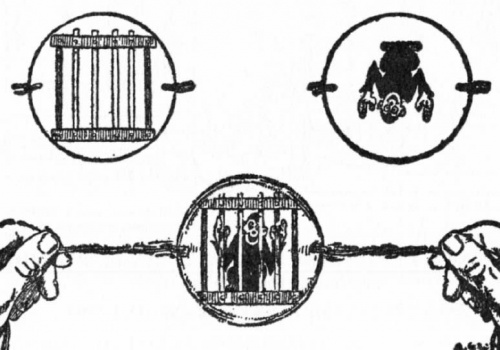
LINKS - - - - - >
how it works
Phenakistoscope and Stroboscope
In 1832 Joseph Plateau (Ghent, Belgium) coined his invention - the phenakistoscope (Greek for 'deceptive view'). That same year, professor Simon Ritter von Stampfer of the Polytechnical Institute (Vienna, Austria) developed the Stampfer Disc (also called the Stroboskopische Sheiben, Stroboscope Discs, optical magic disc, or simply Stroboscope ). Essentially, this was the same device as Plateau's phenakistoscope. These devices were also known under other names such as: Fantascope, Phantamascope, Magic Disc or Kaleidorama.
The simplest phenakistoscope is a spinning disc mounted vertically on a handle. Arranged around the circumference of the disc is a series of equidistant radial slots (usually between 8 and 20), and on the face of the disc a series of pictures representing phases of movement of objects, people or animals. The user spins the disc and looks through the moving slots at the sequence reflected in a mirror, the rapid succession of pictures having the appearance of a moving image. The discs were sold in sets, and could be attached and removed from the handle by a simple fixture.
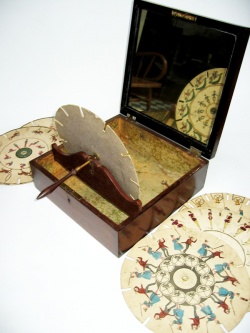
A later version, which eliminated the need for a mirror, had two discs fixed at a distance on the same axis, one with slots and the other (changeable) with pictures. Some sets were designed as table models on wooden stands, with a handle to drive the discs by pulleys.
Zoetrope
The Zoetrope was invented by William George Horner in 1834. He named his device Daedalum or 'wheel of the devil'. This optical toy was forgotten for about 30 years until it was discovered and almost simultaneously patented in 1867 by William F. Lincoln, USA and in England by Milton Bradley. It was from Lincoln that the device received its new name Zoetrope, meaning 'wheel of life' from the Greek word 'zoo' for animal life and 'trope' for 'things that turn'.
Horner's Zoetrope was an adaptation of the principles of the Phenakistoscope. However it was more convenient than Plateau and Stampfer's inventions in that it eliminated the need for a mirror and allowed several people to view the motion at one time. It was constructed of an open-top drum into which was placed a hand drawn sequence of pictures on a strip of paper facing inwards. The outside of the drum had slits cut into the cylindrical surface. When the drum was spun on a central axis, the images could be viewed through the slits giving rise to the illusion of movement.
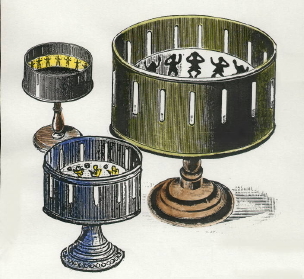

a short video, always better than words
Praxinoscope
In 1877, Frenchman Charles Émile Reynaud, refined the principle of the Zoetrope to use reflected light creating the Praxinoscope (patented December 1877). This was the first device to overcome the blurred distortion caused by viewing through narrow fast moving slots and it quickly replaced the Zoetrope in popularity. Like the Zoetrope, a paper strip of pictures is placed inside a shallow outer cylinder, so that each picture is reflected by the inner set of mirrors. The number of mirror facets equaled the number of pictures on the paper strip. When the outer cylinder rotates, the quick succession of images reflected in the mirrors gives the illusion of movement. This produced a image that was more brilliant and sharper than with any previous device.
Reynaud managed to adapt the principle behind his Praxinoscope to project a series of pictures onto a screen. 1892 in Paris, he opened the 'Theatre Optique' - the very first moving pictures shown publicly via projection onto a screen.
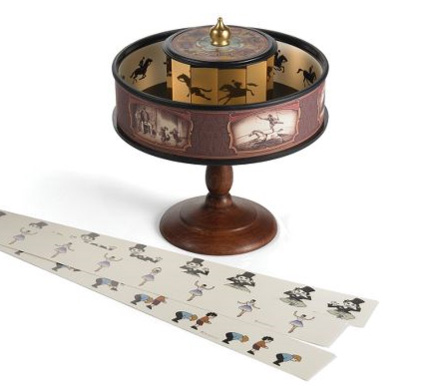
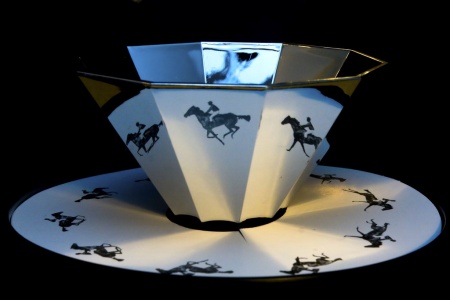
video that shows it:)
and now a useful image to get the difference :)
Technology
Recent projects
Some very few works that employ the same principles
Tim Wheatley
Tim Wheatley is an animator, thus the projects is only seen trough camera
Gregory Barsamian
quite amazing sculptural, stroboscopic works. His website design is almost as dazzling:)
Julien Maire
a 3d printed film
Scott Blake
9/11 Zoetrope by the artist
Bill Brandt
Msstransiscope - Public space artwork
Troika
digital zoetrope
Quinten Swagerman
Pristitrope
Takeshi Murata
sculptural, stroboscopic optical illusion / with flawless documentation
Peter Hudson
huge scale 3d zoetropes at Burning man - this is the man
Disney's toy story 3d zoetrope
A music video using praxinoscopes
Sculpture describe themselves as an Opto-musical agglomerate
Sculpture set
Potentially useful re-creative technology
Motors
!!! WATCH THIS / very nice video from the Prelinger Archives
DC motors
DC (Direct Current) motors are two wire (power & ground), continuous rotation motors. When you supply power, a DC motor will start spinning until that power is removed. Most DC motors run at a high RPM (revolutions per minute).
The speed of DC motors is controlled using pulse width modulation (PWM), a technique of rapidly pulsing the power on and off. The percentage of time spent cycling the on/off ratio determines the speed of the motor, e.g. if the power is cycled at 50% (half on, half off), then the motor will spin at half the speed of 100% (fully on). Each pulse is so rapid that the motor appears to be continuously spinning with no stuttering!


servo motors
Servo motors are basically more flavored Dc motors.
They are generally an assembly of four things: a DC motor, a gearing set, a control circuit and a position-sensor (usually a potentiometer).
The position of servo motors can be controlled more precisely than those of standard DC motors, and they usually have three wires (power, ground & control). Power to servo motors is constantly applied, with the servo control circuit regulating the draw to drive the motor.
Servo motors do not rotate freely like a standard DC motor. Instead the angle of rotation is limited to 180 Degrees back and forth. Servo motors receive a control signal that represents an output position and applies power to the DC motor until the shaft turns to the correct position, determined by the position sensor.
PWM is used for the control signal of servo motors. However, unlike DC motors it’s the duration of the positive pulse that determines the position, rather than speed, of the servo shaft. A neutral pulse value depending on the servo (usually around 1.5ms) keeps the servo shaft in the center position. Increasing that pulse value will make the servo turn clockwise, and a shorter pulse will turn the shaft anticlockwise. The servo control pulse is usually repeated every 20 milliseconds, essentially telling the servo where to go, even if that means remaining in the same position.
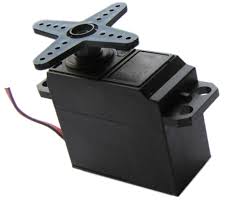
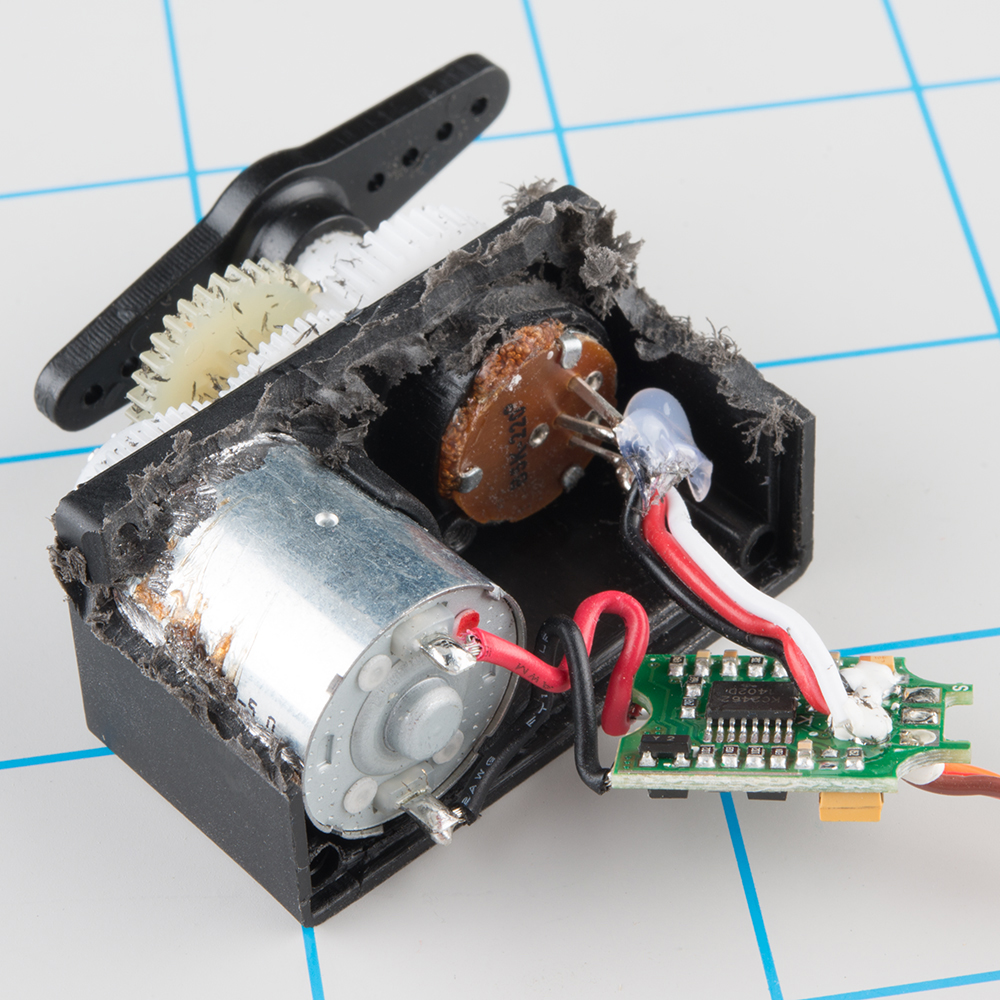
stepper motors
A stepper motor is essentially a servo motor that uses a different method of motorization. Where a servo motor uses a continuous rotation DC motor and integrated controller circuit, stepper motors use multiple toothed electromagnets arranged around a central gear to define position.
Stepper motors require an external control circuit or micro controller (for instance a Raspberry Pi or Arduino) to individually energize each electromagnet and make the motor shaft turn. When electromagnet ‘A’ is powered it attracts the gear’s teeth and aligns them, slightly offset from the next electromagnet ‘B’. When ‘A’ is switch off, and ‘B’ switched on, the gear rotates slightly to align with ‘B’, and so on around the circle, with each electromagnet around the gear energizing and de-energizing in turn to create rotation. Each rotation from one electromagnet to the next is called a "step", and thus the motor can be turned by precise predefined step angles through a full 360 Degree rotation.
Stepper motors are available in two varieties; unipolar or bipolar. Bipolar motors are the strongest type of stepper motor and usually have four or eight leads. They have two sets of electromagnetic coils internally, and stepping is achieved by changing the direction of current within those coils. Unipolar motors, identifiable by having 5,6 or even 8 wires, also have two coils, but each one has a center tap. Unipolar motors can step without having to reverse the direction of current in the coils, making the electronics simpler. However, because the center tap is used to energize only half of each coil at a time they typically have less torque than bipolar.
The design of the stepper motor provides a constant holding torque without the need for the motor to be powered and, provided that the motor is used within its limits, positioning errors don't occur, since stepper motors have physically predefined stations.
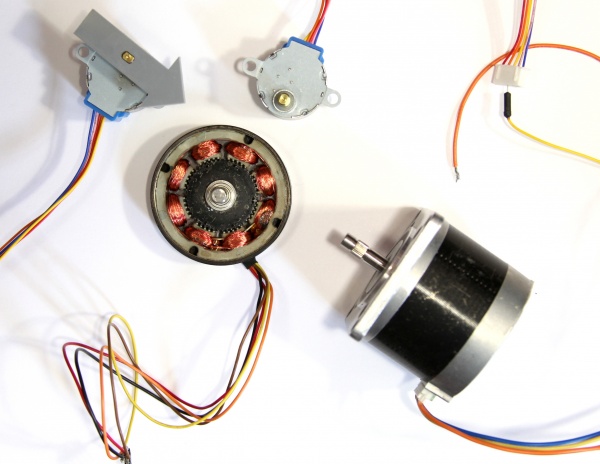
Strobe Light
or stroboscopic light very simply put is a light source that lights on and off very fast. Hope none of us suffers from being exposed at strobing light, as you will probably use it for your projects to be your shutter.
3d printing
lasercutting
Workshop documentation
...end
